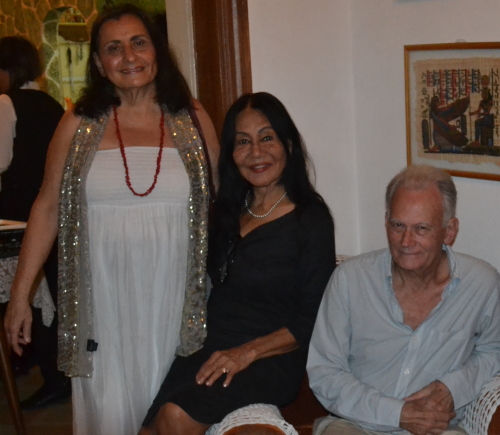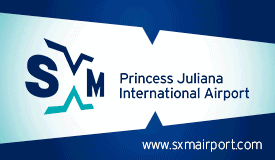 HAVANA, Cuba:--- In the first half of the 1970s, the Curacao couple Diana Lebacs and Pacheco Domacassé appeared in Havana, Cuba. Both were young musicians and writers, she an actress and he a theater director.
HAVANA, Cuba:--- In the first half of the 1970s, the Curacao couple Diana Lebacs and Pacheco Domacassé appeared in Havana, Cuba. Both were young musicians and writers, she an actress and he a theater director.
We established such a partnership—initially based on my interest in the literature of the Dutch territories in the Caribbean—that shortly afterward Diana began to send me (in her own handwriting) bio-bibliographies of authors close to them, and of the published writers that I had requested information about, to expand the wealth of information I had access to at that time.
These mailings and correspondence were related to an overly ambitious plan for an encyclopedic dictionary that would make the writers of the Greater Caribbean visible. But due to its size and lack of resources, the voluminous book project could not be completed. One of the contributors, who wrote a number of articles on Cuban writers, was Raúl Hernández Novás.
As a consequence of our ties, in 1976 Pacheco participated in a Meeting of Caribbean Writers in Havana. Although our exchanges continued by post, it was not until the end of the 1990s that we met again during my brief visit to Curaçao.
Given the scenario of balkanization and little contact between writers from the Netherlands territories in the Caribbean and the rest of the region, I directed the initial proposal toward the preparation of a Dictionary of Writers from the Caribbean Netherlands.
After Diana and I discussed the idea, it became a dream for both of us. She assumed her part of the task spontaneously, with the dynamism and youthful passion with which she undertook all work for the culture of Curaçao.
The elegant and passionate lady, a winner of important literary prizes, invited to countless cultural activities, with many published books, never abandoned our dream of the encyclopedia of Caribbean writers.
Diana also recruited the writer Hilda de Windt-Ayoubi, and they created an advisory committee. The committee held numerous meetings, of which they sent me minutes with questions, clarifications, doubts, and proposals.
My project was presented to the Prins Bernhard Culture Fund Caribbean Region, and in 2019, that institution granted a financial subsidy to expand the research to be carried out in the six islands concerned: Aruba, Bonaire, Curacao, Saba, St. Eustatius, St. Martin (Netherlands part).
Amid the COVID-19 pandemic, with the impossibility of traveling to the islands, the research has been slowed down, but not abandoned. All the people committed to the literary project have maintained an interest in completing the Dictionary, imbued by Diana’s immeasurable energy.
When Hilda called me early in the morning of July 12 with news of Diana’s passing the previous day, she also told me that Diana used to visit her to brainstorm about advancing the literary research project, something that I intuited from a distance.
I understand that the linguistic complexity of the Caribbean region means that some of my friends on Facebook are unaware of many of its writers. That is why my tribute to Diana has focused generally on her perseverance towards the Dictionary that we longed for together—a dictionary that will also include a more updated version of the article I wrote about her for the Dictionary of Caribbean and Afro-Latin American Biography (Oxford University Press, 2016).
Be assured, we will continue to dream of the project that you cherished as our own, Diana. Wherever you are, receive my immense love and respect.
Brasa, Diana.
Works by Diana Lebacs in Papiamentu and Dutch
(Selected by Emilio Jorge Rodríguez)
Sherry - het begin van een begin (young adult novel, 1971); Kompa datu ta konta, 1975; Nancho van Bonaire (children’s literature, 1976); Chimina-kome-lubida, 1976; Ken-ken pia di wesu (1977); Nancho matroos (children’s literature, 1977); Nancho niemand (children’s literature, 1979); Sabio, Nachi i Bueno: un cuenta di Luango (children’s literature, 1979); Nancho kapitein (children’s literature, 1982); Yòmi-yòmi (children’s literature,1982); Suikerriet Rosy (youth literature, 1983); Kas ta kas (children’s literature, 1985); De spokenband (children’s literature, 1985); Robin en de reuzerobot (children’s literature, 1985); Het witte licht (youth literature, 1986); Kuantu nan ta? (children’s literature, 1987); Dies dede enkantá (children’s literature, 1987); Rini ta bai took (children’s literature, 1987); Mòru Rini (children’s literature, 1987); At’akí mi boka (children’s literature, 1987); Nanishi riba dje (children’s literature, 1987); Dos wowo pa mi mira (children’s literature, 1987); Orea pa tend’é (children’s literature, 1987); Ocho kuenta di maravia (children’s literature, 1987); De toembakoning (children’s literature, 1989); De langste maand (novel, 1994); Caimin su sekretu (children’s literature, 2001); Fula fula (children’s literature, 2005); Waarover wij niet moeten praten/Vrouwen aan het woord (short stories, 2007); Waar is Olivier? / Unda Olivier ta? (children’s literature, 2010); Ubuntu (youth literature, 2010); Kaboemmm! En toen… (children’s literature, 2013); Belumbe/de waterlijn (poetry, 2014); Duizend leugens bruidstaart (novel, 2016); Grandesa di Amistat (youth literature, 1918).










